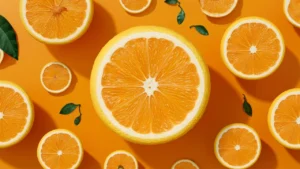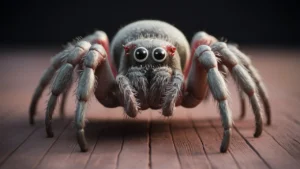Beans are a marvel of nature, packed with nutrition, versatility, and a touch of magic that has captivated humanity for centuries. From their nutritional benefits to their historical significance, beans have a fascinating story to tell. Join us on a journey as we uncover 75 intriguing bean facts that will leave you amazed and enlightened.
1. The Nutritional Powerhouse: Beans and Health Benefits 🥗
- High in Protein: Beans are an excellent source of plant-based protein, making them a staple for vegetarians and vegans.
- Rich in Fiber: They are loaded with dietary fiber, aiding digestion and promoting a healthy gut.
- Low in Fat: Most beans are naturally low in fat, contributing to heart health.
- Packed with Vitamins: Beans contain essential vitamins such as B vitamins, folate, and vitamin C.
- Mineral Rich: They are a good source of minerals like iron, magnesium, and potassium.
- Antioxidant Properties: Many beans are high in antioxidants, which help fight free radicals.
- Regulate Blood Sugar: The high fiber content in beans helps stabilize blood sugar levels.
- Supports Weight Loss: Beans are low in calories but high in nutrients, making them perfect for weight management.
- Improves Heart Health: Regular consumption of beans can lower bad cholesterol (LDL) levels.
- Boosts Energy: The complex carbohydrates in beans provide a steady source of energy.
2. Historical Significance: Beans in Ancient Cultures 🏛️
- Ancient Egypt: Beans were found in tombs and used as food for the dead.
- Aztec Civilization: The Aztecs cultivated beans alongside corn and squash in the “Three Sisters” agricultural method.
- Ancient Greece: The Greeks used beans in their daily diet and as offerings to the gods.
- Roman Empire: Romans highly valued beans for their nutritional benefits.
- Middle Ages: Beans were a staple in the diet of medieval Europe.
- China: Soybeans have been cultivated in China for over 5,000 years.
- India: Lentils and other legumes have been integral to Indian cuisine for millennia.
- Africa: Beans have been a crucial part of African diets, particularly in Ethiopia.
- Native American Tribes: Beans were vital in the diet and agriculture of many Native American tribes.
- South America: Lima beans were first domesticated in Peru around 2000 BC.
3. The Diversity of Beans: Varieties and Types 🌈
- Black Beans: Popular in Latin American cuisine for their rich flavor.
- Kidney Beans: Named for their shape, these are often used in chili.
- Chickpeas: Also known as garbanzo beans, key in making hummus.
- Lentils: Come in various colors, each with unique flavors and textures.
- Soybeans: Used to make tofu, soy milk, and many other products.
- Pinto Beans: Common in Mexican dishes, known for their speckled appearance.
- Navy Beans: Small, white beans often used in soups.
- Cannellini Beans: A type of white bean popular in Italian cuisine.
- Adzuki Beans: Sweet beans often used in Asian desserts.
- Fava Beans: Large, flat beans with a buttery texture.
4. Beans in Cuisine: Culinary Uses Around the World 🍽️
- Mexican Cuisine: Beans are a staple, often served as refried beans or in burritos.
- Middle Eastern Cuisine: Hummus and falafel are made from chickpeas.
- Indian Cuisine: Dal, a staple dish, is made from lentils.
- Chinese Cuisine: Fermented black beans are used in many dishes.
- Italian Cuisine: Cannellini beans are used in soups and stews like minestrone.
- Japanese Cuisine: Adzuki beans are used in sweet red bean paste.
- Caribbean Cuisine: Rice and beans, a classic dish in many Caribbean islands.
- French Cuisine: Cassoulet, a slow-cooked casserole, includes white beans.
- African Cuisine: Beans are used in many traditional dishes, such as Nigerian moi moi.
- American Cuisine: Baked beans are a popular side dish, especially at barbecues.
5. Beans in Pop Culture: References and Symbols 🎬
- Jack and the Beanstalk: A classic fairy tale featuring magical beans.
- Mr. Bean: A popular British TV character known for his comedic antics.
- Beanie Babies: A line of collectible stuffed animals filled with plastic pellets.
- Boston Baked Beans: A candy-coated peanut snack.
- The Beanie Hat: A popular style of knit cap.
- Beans in Music: Songs like “Beans and Cornbread” by Louis Jordan.
- Beans in Literature: Mentioned in classics like “Of Mice and Men.”
- Bean Bag Chairs: Comfortable seating filled with tiny beans.
- Beans in Slang: “Spill the beans” means to reveal a secret.
- Beans in Art: Depicted in various artworks, often symbolizing growth and fertility.
6. Fun Facts: Surprising and Quirky Bean Trivia 🎉
- World Record: The largest baked bean bath had 500,000 beans.
- Exploding Beans: Some beans, like soybeans, can explode when heated.
- Bean Counting: The phrase “bean counter” refers to an accountant.
- National Bean Day: Celebrated on January 6th each year.
- Coffee Beans: Technically, they are seeds, not beans.
- Ancient Currency: Beans were once used as a form of money in some cultures.
- Space Beans: Beans have been grown in space by astronauts.
- Longest Bean Pod: The record is over 5 feet long!
- Magical Beans: Some cultures believed beans had mystical properties.
- Farting Beans: Beans are known for causing flatulence due to their high fiber content.
7. Growing Beans: Tips for Your Garden 🌱
- Soil Preparation: Beans thrive in well-drained, loamy soil.
- Planting Depth: Plant beans about 1-2 inches deep.
- Sunlight: Beans need full sun, at least 6-8 hours per day.
- Watering: Keep the soil moist but not waterlogged.
- Spacing: Plant beans about 2-4 inches apart.
- Support: Climbing beans need trellises or poles for support.
- Pest Control: Use natural repellents to protect from insects.
- Harvesting: Pick beans when they are firm and full-sized.
- Succession Planting: Stagger planting times for continuous harvest.
- Soil Rotation: Rotate crops to prevent soil depletion.
8. The Science of Beans: Nutritional Composition 🧬
- Protein Content: Beans are about 20-25% protein by weight.
- Carbohydrates: Beans are rich in complex carbohydrates.
- Fiber Content: They provide both soluble and insoluble fiber.
- Vitamin Profile: Beans are high in folate, B vitamins, and vitamin C.
- Mineral Content: Excellent sources of iron, magnesium, and potassium.
- Low Glycemic Index: Beans help regulate blood sugar levels.
- Antioxidants: Many beans contain flavonoids and other antioxidants.
- Phytonutrients: Beans have plant compounds that provide health benefits.
- Amino Acids: Beans contain essential amino acids needed for health.
- Caloric Content: Beans are low in calories but nutrient-dense.
9. Beans and Sustainability: Environmental Impact 🌍
- Low Water Usage: Beans require less water compared to other crops.
- Nitrogen Fixation: Beans enrich the soil by fixing nitrogen.
- Low Carbon Footprint: Growing beans emits fewer greenhouse gases.
- Minimal Pesticides: Beans are generally less reliant on pesticides.
- Soil Health: Bean plants improve soil structure and fertility.
- Biodiversity: Beans contribute to agricultural biodiversity.
- Crop Rotation: Beans are excellent for crop rotation practices.
- Sustainable Protein: Beans provide a sustainable protein source.
- Local Farming: Beans can be grown locally, reducing transport emissions.
- Reduced Waste: Bean crops typically produce less agricultural waste.
10. Beans and Legumes: What’s the Difference? 🤔
- Legume Family: Beans belong to the legume family, which also includes lentils and peas.
- Pod Formation: Legumes produce pods that contain seeds.
- Nitrogen Fixation: Both beans and legumes fix nitrogen in the soil.
- Culinary Uses: Beans and legumes are used similarly in cooking.
- Variety: Legumes include beans, lentils, peas, and chickpeas.
- Nutritional Profile: Both are high in protein, fiber, and essential nutrients.
- Plant Structure: Beans grow on bushes or vines, while legumes can vary.
- Seed Shape: Beans are usually kidney-shaped, legumes can be round or flat.
- Cooking Methods: Beans often need soaking; legumes like lentils cook faster.
- Cultural Significance: Both have been staple foods in various cultures.
11. Bean Myths and Legends: Folklore and Tales 📚
- Magic Beans: The tale of “Jack and the Beanstalk” is the most famous.
- Good Luck: In some cultures, beans are considered symbols of good luck.
- Healing Powers: Ancient Greeks believed beans had medicinal properties.
- Mystical Beans: Some Native American tribes used beans in rituals.
- Love Potions: Beans were sometimes used in love potions and spells.
- Protection: Beans were thought to protect against evil spirits.
- Divination: In some cultures, beans were used in fortune-telling.
- Resurrection: Beans were symbols of rebirth and resurrection in ancient Egypt.
- Wishing Beans: Beans were used in some cultures to make wishes come true.
- Sacred Beans: Certain beans were considered sacred and used in religious ceremonies.
12. Bean Art: Creative Uses and Inspirations 🎨
- Bean Mosaics: Creating art using different colored beans.
- Bean Jewelry: Necklaces and bracelets made from beans.
- Bean Sculptures: Intricate sculptures crafted from beans.
- Bean Painting: Using beans to create textured paintings.
- Bean Crafts: Various crafts for children using beans.
- Bean Gardens: Decorative bean gardens in glass jars.
- Bean Decorations: Beans used in home decor items.
- Bean Embroidery: Embroidering designs with beans.
- Bean Mandalas: Creating mandala designs with beans.
- Bean Photography: Artistic photography featuring beans.
13. Beans and Agriculture: Farming Practices 🚜
- Soil Preparation: Ensuring the soil is ready for bean planting.
- Planting Techniques: Methods for planting beans efficiently.
- Irrigation Methods: Best practices for watering bean crops.
- Pest Management: Natural ways to manage pests in bean farming.
- Harvesting Methods: Techniques for harvesting beans.
- Storage Solutions: Proper storage of harvested beans.
- Crop Rotation: Importance of rotating beans with other crops.
- Organic Farming: Growing beans organically.
- Climate Considerations: Best climates for different types of beans.
- Yield Improvement: Techniques to improve bean crop yields.
14. Beans and Science: Research and Innovations 🧪
- Genetic Modification: Advances in genetically modifying beans.
- Disease Resistance: Research on disease-resistant bean varieties.
- Nutritional Enhancement: Enhancing the nutritional profile of beans.
- Climate Adaptation: Developing beans that can withstand climate change.
- Pest Resistance: Creating beans that are resistant to pests.
- Yield Improvement: Innovations to increase bean yields.
- Sustainable Farming: Research on sustainable bean farming practices.
- Soil Health: Studies on how beans improve soil health.
- Protein Extraction: New methods of extracting protein from beans.
- Flavor Enhancement: Enhancing the natural flavors of beans.
15. Beans in the Economy: Economic Importance 💸
- Global Trade: The role of beans in international trade.
- Market Demand: Demand for beans in various markets.
- Price Fluctuations: Factors affecting bean prices.
- Economic Impact: The economic impact of bean farming.
- Job Creation: Jobs created by the bean industry.
- Export Markets: Major exporters and importers of beans.
- Local Economies: Beans’ importance to local economies.
- Supply Chain: The bean supply chain from farm to table.
- Investment Opportunities: Investing in the bean market.
- Sustainability Initiatives: Economic benefits of sustainable bean farming.
16. Beans and Biodiversity: Conserving Genetic Diversity 🐞
- Heirloom Varieties: Preserving traditional bean varieties.
- Seed Banks: Storing bean seeds for future use.
- Genetic Research: Studying the genetics of different bean types.
- Cross-Breeding: Creating new bean varieties through cross-breeding.
- Wild Relatives: Importance of wild bean species in biodiversity.
- Agroforestry: Growing beans in agroforestry systems.
- Pollinator Support: Beans as a food source for pollinators.
- Ecosystem Services: Benefits of beans to ecosystems.
- Biodiverse Farms: Promoting biodiversity on bean farms.
- Conservation Efforts: Global efforts to conserve bean biodiversity.
17. Beans and Culture: Festivals and Traditions 🎉
- Bean Day: Celebrations on National Bean Day.
- Harvest Festivals: Festivals celebrating the bean harvest.
- Cultural Dishes: Traditional dishes featuring beans.
- Bean Art: Art exhibits featuring bean-inspired works.
- Cooking Competitions: Bean cooking competitions.
- Music and Dance: Performances inspired by beans.
- Bean Crafts: Craft activities using beans.
- Educational Programs: Programs teaching about beans.
- Bean Markets: Markets specializing in bean products.
- Community Gardens: Community gardening projects focused on beans.
18. Beans in Literature: Books and Stories 📚
- Fairy Tales: Stories like “Jack and the Beanstalk.”
- Cookbooks: Books dedicated to cooking with beans.
- Children’s Books: Educational books about beans for kids.
- Historical Texts: Books on the history of beans.
- Gardening Books: Guides to growing beans.
- Health Books: Books on the health benefits of beans.
- Recipe Collections: Collections of bean recipes.
- Cultural Stories: Stories featuring beans from various cultures.
- Science Books: Books on the science of beans.
- Fiction: Novels featuring beans as a plot element.
19. Beans and Technology: Modern Innovations 🚀
- Precision Agriculture: Using technology to optimize bean farming.
- Genetic Editing: CRISPR technology in bean cultivation.
- Hydroponics: Growing beans in water-based systems.
- Vertical Farming: Beans grown in vertical farming setups.
- Smart Irrigation: Automated irrigation systems for bean crops.
- Drone Technology: Drones used for monitoring bean fields.
- Data Analytics: Using data to improve bean yields.
- Robotics: Robots in bean harvesting.
- Biotechnology: Advances in bean biotechnology.
- Sustainable Packaging: Eco-friendly packaging for bean products.
20. Beans and the Future: What Lies Ahead? 🔮
- Climate Resilience: Developing climate-resilient bean varieties.
- Global Food Security: Beans’ role in ensuring global food security.
- Nutritional Research: New findings on the nutritional benefits of beans.
- Sustainable Practices: Advancements in sustainable bean farming.
- Health Trends: Growing trends in plant-based diets featuring beans.
- Market Growth: Predicted growth in the global bean market.
- Innovative Products: New bean-based products hitting the market.
- Food Technology: Future technologies in bean cultivation.
- Environmental Impact: Reducing the environmental impact of bean farming.
- Cultural Shifts: How beans will shape future culinary and cultural trends.
Conclusion: 🎉
Beans are more than just a humble food staple; they are a nutritional powerhouse, a cultural icon, and a sustainable choice for the future. Whether you’re enjoying a hearty bowl of chili, a delicious hummus dip, or planting beans in your garden, the magic of beans is undeniable. As we look to the future, beans will continue to play a vital role in our diets, economies, and cultures worldwide.

Nicholas Clark is the laughter maestro at laughter.com. Renowned for his razor-sharp humor and uncanny ability to find comedy in the everyday, Nicholas captivates readers with his unique perspective.










